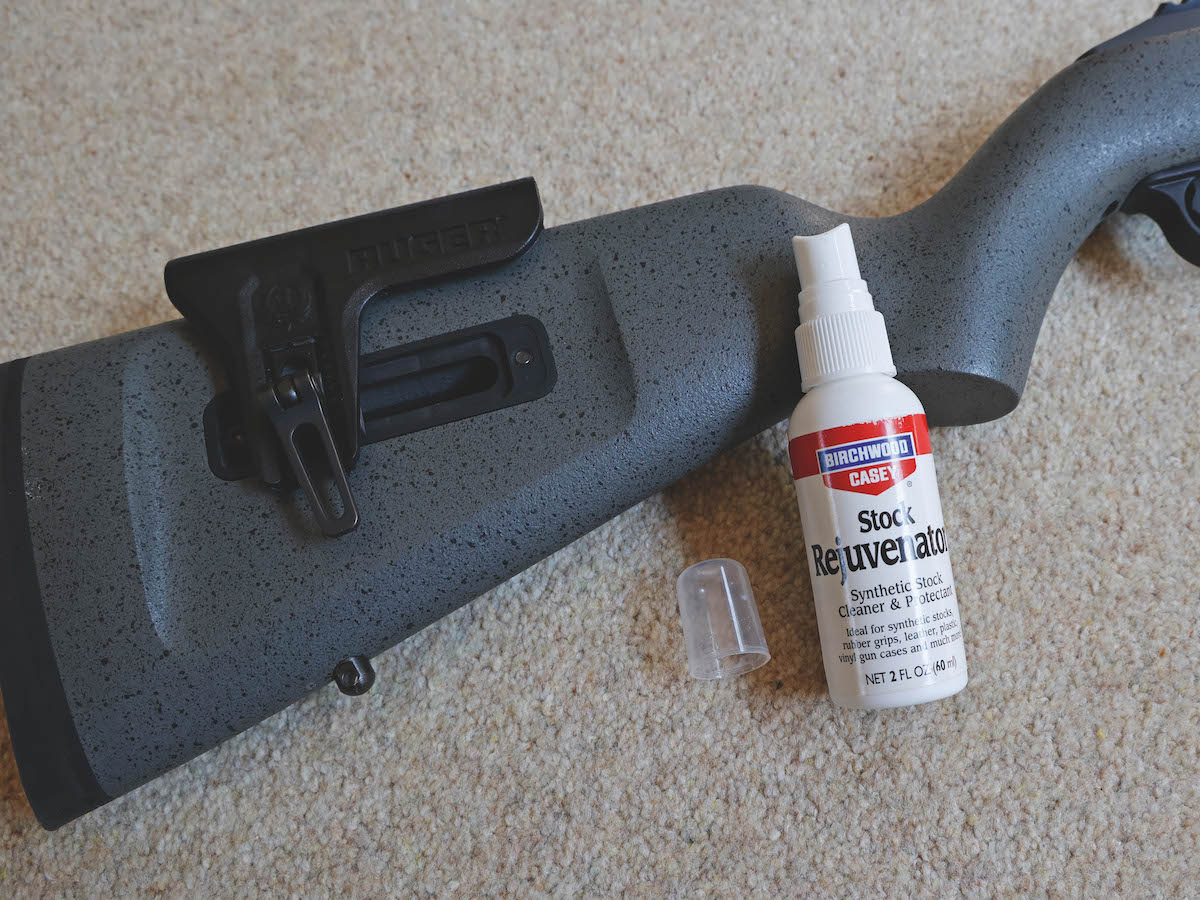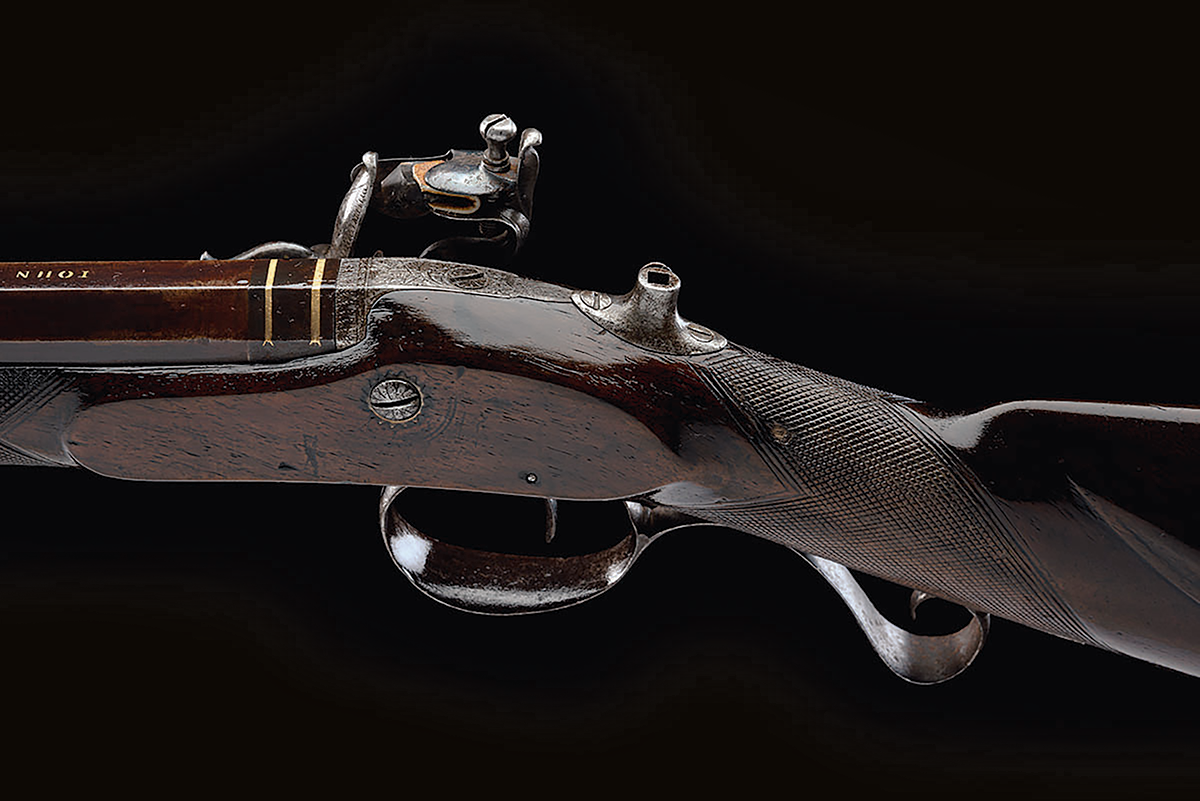A 20-step guide to cleaning your stalking rifle properly
A step by step guide to cleaning your stalking rifle after a day of constant rain out on the hill

Let’s assume that the stalking rifle is in a standard calibre, for instance a .308 or .30-06, and has been brought home from the hill and is now soaking wet.
- The first step towards restoring it to a dry and clean condition is to take out the bolt and, if you are sufficiently confident, to remove the metalwork of the breech from the stock. This is really not too difficult. Most rifles are screwed together with two screws, one at the back of the trigger and one in front of the trigger-guard or the action. These screws can usually be undone easily, but this really only needs to be undertaken if the rifle has been drenched with rain. Under these conditions, water will seep between the metal and the woodwork, so both must be cleaned and dried. Disassembling the rifle can affect the zero on some of the older models, so only remove the stock from the action in dire circumstances (i.e. when sodden with rain).
- In order to dry the rifle thoroughly, place both it and the bolt on a sheet of newspaper at room temperature and let them dry slowly, and if the stock is made of wood never place it in an airing cupboard or near a heat source as it will warp.
- When the stock and barrel are dry and all excess water and moisture have been removed start cleaning the barrel. The bolt has been removed and the bore should then be cleaned with either a phosphorus bronze brush or a nylon brush. Copper solvent should be applied to the brush and this can then be pushed through the bore using a bore guide if you have one. Failing that, the rod can be supported by your fingers so that the brush is not rubbed into the breech or throat of the rifle. The brush will now emerge from the crown or muzzle of the barrel and a few drops of solvent can be applied to it. The cleaning rod should be pulled back and worked up and down along the length of the barrel several times to make sure an adequate coating of solvent is deposited in the rifling.
- The rod and brush should then be withdrawn and the barrel left to soak for 10 to 15 minutes so that the copper solvent can do its work.
- The bore is then cleaned either with a pull-through using a clean cloth or else a rod with detachable cotton patches to remove the solvent. Each patch I use is placed on a Pro-Shot jag with a point, screwed on to the rod and then gently pushed through the barrel. As it exits the muzzle, the rod is withdrawn and the patch drops off. Then carefully withdraw the rod, place another clean patch on the point and push it through.
- Keep on pushing patches through the bore until they appear relatively clean and dry. Now soak a patch in degreasant and push that through to remove all grease from the barrel.
- Finally, clean again with a dry patch. Don’t forget to wipe the crown of the rifle when you have finished as solvent will gather there.
- In the case of a stalking rifle, one only needs to clean with copper solvent after about 30 to 50 rounds have been fired. If you are stalking and only fire one or two shots, then use a bore snake to clean the loose fouling from the barrel, and simply push a dry patch through.
- I always use a bore snake to remove any fouling simply because after 24 to 48 hours the loose fouling will glue itself to the inside of the barrel. When the next round is fired, the bullet has to grind out the fouling and this will cause more wear than the passage of the bullet.
- If copper is left inside the bore, particularly if the barrel is molychrome steel, as opposed to stainless steel, the residue can be quite corrosive and will eat away the metal. A layer of corrosive deposits will form between the copper and metal and this is a major cause of pitting in barrels. Copper deposits must be removed from the bore, otherwise they will build up over time. Once a coating of copper appears in the barrel, then it will attract more copper until quite a thick layer appears in certain parts of the bore and this will, of course, affect accuracy.
- Having cleaned the bore, one now needs to check the chamber as withdrawing and pushing patches through the barrel can cause deposits of solvent to become attached.
- Either put a large patch on to a brush or use a chamber brush or mop to clean inside the chamber and soak up any excess fluid, dirt or brass particles from cases, which can also be deposited.
- Last, check the section immediately behind the barrel in the action where the bolt locks on to the abutments and where the lugs go. This needs to be cleaned to make sure there is no residual debris. Under no circumstances must you leave any oil or solvent in the barrel. This should always be dry unless the rifle is to be stored for a long period without use.
- Oil the bore.
- The barrel is now clean and the action must be attended to.
- A build-up of debris can appear in the well a little in front of the bolt lugs so, using a cotton bud bent at a 90° angle, any dirt here can be poked out. If you have access to an air-line this can also be used to clean this area. Wipe the barrel and the action body over with a lightly oiled rag to clean the metal surfaces and prevent any rust.
- Never pour any oil into the trigger mechanism, the safety catch or any bolt holes. These areas should only be cleaned by a professional gunsmith on an annual basis when the rifle is serviced.
- The woodwork can also be wiped over with a rag.
- Now the rifle is clean and can be stored in its cabinet. It makes no difference whether it has the muzzle or butt resting on the ground, though if the muzzle is pointing down, make sure it rests on a soft pad to avoid damage to the crown.If the rifle is to be stored for a length of time without use, a light film of oil can be left in the bore, but it must be cleaned out with methylated spirits or a degreasant before it is next shot because if there is any oil in the barrel when the rifle is used, the first few shots will be way off target.
- If I have fired between 30 and 40 shots from my own .30-06 stalking rifle then I will give it a complete treatment with copper solvent and clean it with a bore snake and shoot as normal, because most barrels like to be slightly fouled to give them optimum accuracy. I’ll then clean it with a bore snake again before putting it away.







